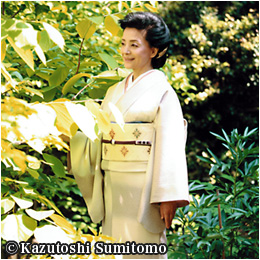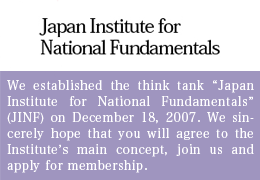Radiation Myth Hampers Fukushima Recovery
With the lower house election just around the corner (December 16), the inept performance of the incumbent Democratic Party of Japan (DPJ) over the past three-plus years will be duly assessed. Meanwhile in the northeastern prefecture of Fukushima, the victims of last year’s horrendous tsunami and subsequent nuclear disaster are still struggling desperately to recover.
Twenty-one months after the meltdowns and explosions at Tokyo Electric’s Fukushima No. 1 nuclear power plant, much of the town where the plant stands, Futaba-cho, as well as two neighboring towns of Namie-cho and Tomioka-cho, still remains designated as “hazard zones.” Visits are permitted, but no one is yet allowed to reside in these zones. The township of Okuma-cho had the “hazard zone” designation lifted on December 10, but some areas in the central part of the town are still off-limits due to high radiation levels.
On December 8, I was invited to attend a conference jointly hosted by chairmen of the regional municipality assemblies representing eight disaster-hit towns in Fukushima – Naraha-cho and Hirono-cho, as well as the villages of Katsurao and Kawauchi — in addition to the four towns I have just referred to. It turned out to be an excellent opportunity to exchange candid views on ways to achieve full recovery for these contaminated locales. Also present at the conference, held at the Fukushima Agriculture General Center in Koriyama City, were a significant number of local assembly members.
Among the attendees was Mayor Yuko Endo of Kawauchi-mura village. Although some parts of his village still have high radioactive levels, most of the village is marked by lower radiation. All of the 60 staff of Kawauchi’s village office who evacuated their contaminated village shortly after the accident were back in town by the end of last March, with the office ready for full operation starting April 1.
Listening to the evacuees of the regions affected by radiation makes one keenly aware of just how widespread the “1.0 millisievert myth” is and how serious an impediment it has become to recovery in Fukushima. The “1.0 millisievert myth” is one of the worst products of the DPJ’s populist politics. It started when the DPJ minister in charge of recovery from the nuclear accident, Goshi Hosono, together with other DPJ Diet members, set the contamination standard for all municipalities at 1.0 millisievert a year.
Although the International Commission on Radiological Protection (ICRP) notes that the effects of radiation exposure on the human body of less than 100 millisieverts per annum have yet to be determined, it has set a standard reflecting its viewpoint that “the less radiation exposure, the better.”
The ICRP standard can be summarized as follows. No recognizable harm to the human body has so far been observed for radiation dosage of less than 100 millisieverts a year. However, just to be on the safe side, the ICRP has recommended that exposure to radiation be held at what it considers as the lowest permissible level. Since the negative effects of exposure to more than 100 millisieverts have been medically proven, the international body has set the maximum at 100 millisieverts over a five-year period (20 millisieverts per year) – or less than 50 millisieverts per single year – for those who are professionally likely to be exposed to radiation, such as medical doctors, nurses, miners, and marine engineers
Ex-Minister Hosono and Others Should Be Held Responsible
Under the ICRP recommendations, the maximum permissible dose of radiation for an ordinary citizen in a disaster-hit region whose life is returning to normal is set at 20 millisieverts a year, although the ideal dose is 1.0 millisievert or less.
The radiation dose the average Japanese is exposed to annually is a total of 6.0 millisieverts, which breaks down into 1.5 millisieverts from natural radiation, 4.0 millisieverts from X-ray examinations or CT scan, and 0.5 millisieverts from food.
Some assembly chairmen felt that a good number of former residents would have been enticed to return to their hometowns to start a new life again if the DPJ had honored the ICRP standard, which set the maximum permissible radiation dose at 20 millisieverts a year – instead of the on-going 1.0 millisievert level. During the question-and-answer session, there were voices stubbornly advocating an adherence to the DPJ-designated level of 1.0 millisievert. In point of fact, those favoring the “purist” approach constituted an overwhelming majority.
A member of the assembly of one township, who obviously is an avid proponent of such a viewpoint, made remarks in a loud voice which I found rather baffling: “The only opinion I can give due respect to is that of the ICRP. I can hardly believe anything said by the government, the media, or the so-called experts!”
I am afraid he was missing the point. As mentioned earlier, the ICRP has indeed set the maximum permissible level of annual radiation dose for those who are recovering from an emergency situation at 20 millisieverts or less, while acknowledging the need for conscientious and stepped-up efforts to reduce the level below 1.0 millisievert as soon as possible. Obviously, the assemblyman has failed to comprehend what the ICPR standard is all about. As a member of a town assembly charged with safeguarding the welfare of the people of the community he represents, he should have been at least familiar with the outline of the ICRP recommendations. However, I feel I may be a little too harsh on him, because the incumbent government itself has failed miserably to come to grips with this matter.
Mr. Hosono and his colleagues must be held fully responsible for the fact that a significant number of former residents still refuse to return to their hometowns, even though these towns have actually become quite fit for habitation, with decontamination work having managed to reduce the radiation level far below 20 millisieverts. Obviously, the obstacle is the “1.0 millisievert myth,” which has become self-perpetuating. Kawauchi village chief Endo stressed the importance of thinking calmly under the circumstances by taking a hard look at the realities of their hometowns.
“I sincerely hope that the new administration will fundamentally right the many wrongs attributable to the incumbent administration. I have told the evacuees from our village that it will be safe to go home when the radiation levels are reduced below 5.0 millisieverts, while we continue to strive to attain the 1.0. millisievert level, or less. However, the ‘myth’ has been so firmly imbedded in the minds of our people that the 1.0 millisievert radiation dose has unfortunately been established as the demarcation line between safety and danger for virtually all of the former residents. What leaders need today is the courage with which to precisely explain what needs to be done in order to change the situation.”
Endo declares that hometown rejuvenation can hardly be accomplished if villagers become too afraid of trying new things, or suffer a loss of self-reliance. He notes:
“I am keenly aware of the importance of reviewing the relationship between local governments and the people. It has been nearly a year since I returned to Kawauchi from Koriyama, where we had our temporary village office. Frankly, radiation levels in our village are very low now – low enough for many more of our former residents to come home and start a new life. However, they have yet to come back in the numbers I had envisioned.”
Needed: Mental Preparations for Self-Reliance
Endo has promptly taken steps to lure enterprises to Kawauchi with hopes of securing jobs for former residents. Kikuchi Seisakujo Co., a general machine and machine parts manufacturer in Hachioji, western Tokyo, has inaugurated a new plant in Kawauchi, employing 33 villagers with plans to eventually increase the total number of employees to 50. House maker Shiki Building (also known as Shiki-Kobo), headquartered in Nagasaki, Kyushu, has hired two villagers, who are slated for technical training. Including the duo, the firm plans to hire a total of ten Kawauchi residents. Family Mart, a Japanese convenience store franchise chain, opened up a new store in Kawauchi this month with a richer selection of goods than its sister stores.
More jobs will be available as the village plans to resume rice planting in 2013 for the first time in three years. But Endo admits one reason the villagers are not returning to Kawauchi is that they have taken a liking to the convenience of the lifestyle where they are now living as evacuees.
“In a city like Koriyama, one definitely can live an easier and more luxurious life than in Kawauchi,” explains Endo. “And yet, one should know the life he has as an evacuee now is not one that he has built on his own but rather is one that is only temporarily possible because of compensation from Tokyo Electric as well as some social welfare benefits. I feel that the evacuees are steadily being detached from the mindset they had before the disaster which was to make do with what they had. It is also evident that the evacuees have become more dependent on assistance from the government whenever they are in need.”
As matters stand now, those living in temporary dwellings, including those in houses and apartments whose rents are covered by local municipalities, are entitled to a monthly allowance of \100,000 yen (approximately US$1,250) put up by Tokyo Electric – an arrangement expected to last through March 2014. Endo views the allowance as warranted for those who have no means of returning to their homes even though they may badly wish to do so. He also believes that this kind of financial support is undoubtedly behind the refusal of some people to return home, even if their home area is fit for habitation and cultivation. Adds Endo:
“I expect the new administration to extend financial and other assistance to evacuees in such a way as to encourage them to nurture the spirit of self-reliance. As for the \100,000 monthly allowance per evacuee, I want the government to make clear it won’t allow its extension beyond March of 2016, so as to remind evacuees that they should start making mental preparations for self-help instead.”
Even though it will be difficult, the rejuvenation of these towns will not be achieved without the spirit of self-reliance. That is why I believe it mandatory to have officials and citizens of contaminated municipalities obtain and correctly understand ICRP information pertaining to radiation dosage while continuing to provide all necessary assistance. This I believe should be the top priority of the new administration above all else.
Endo concluded his remarks with the following revelation:
“There still are a heap of problems my village has to wrestle with. And yet, a total of 1,160 former residents have chosen to come back to Kawauchi. That’s 40 percent of our previous population.”
Endo’s proud voice struck a chord in my heart.
(Translated from “Renaissance Japan” column no. 539 in the December 20, 2012 issue of The Weekly Shincho)








